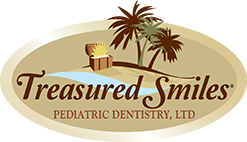Understanding Primary Versus Permanent Teeth

Growing up comes with a log of changes. One major change is to the teeth. Your child will lose all their primary teeth at a young age. Regardless, it is imperative to care for primary teeth. If you would like to know more about the difference between primary and permanent teeth, keep reading.
Permanent and Primary Teeth Serve Multiple Functions
Primary teeth and permanent teeth serve multiple functions. They both help your child speak properly and chew without pain or discomfort. When a tooth is lost, depending on the location, it can impact speech. For example, if your child loses their front teeth (primary or permanent), they will often not be able to pronounce th sounds correctly.
Food can also get stuck in gaps from missing teeth. This increases the risk of irritation to the gums. At the very least, this can cause discomfort for your child, but in more serious situations, it may lead to gum disease. However, food particles can also get stuck, increasing the risk of tooth decay.
Primary teeth serve one more purpose. They are placeholders for permanent teeth. Without them, permanent teeth are more likely to grow crooked or misaligned. With healthy primary teeth, the permanent teeth have a clear path to follow.
Permanent Teeth Start at Age Six
Your child's primary teeth should start appearing at about six months. By the time your child is about three years old, they should have all their primary teeth. This includes incisors, cuspids, and a total of four molars. Typically, by the time your child is about 12 or 13, they should have lost all of their primary teeth: a total of 20 teeth.
During this time, permanent teeth are replacing primary teeth. Therefore, your child will likely have a mixture of primary and permanent teeth. These permanent teeth start as early as six years old, and the first teeth are often the first molars and incisors. The canines and back molars come in later: at about 11-13 years. However, it isn't until your child is about 17—21 when their third molars (wisdom teeth) begin to erupt: providing a total of 32 teeth.
These wisdom teeth prove a unique problem. In the past, they were necessary for our ancestors to better chew foods like leaves and raw meats. Today, we have evolved past the need for wisdom teeth. Since they still grow, however, they can easily overcrowd teeth, leading to impacted teeth and decay.
In fact, since you have more permanent teeth than primary teeth, overcrowding can be a major issue with or without wisdom teeth. For this reason, your child's dentist will monitor the teeth as they fall out and regrow to determine if there will be enough room for all the permanent teeth. If not, orthodontic treatment should begin early.
Primary Teeth Are Less Durable
Primary teeth are quite different than permanent teeth. For starters, they are smaller, so many children look like they have gaps between their teeth. However, once the larger permanent teeth erupt, these gaps will fill in. In addition, permanent teeth have structures like mamelons, rounded tips, and lots of deep grooves (on molars) when compared to primary teeth. This makes it easier for them to break through gum tissue.
The leading difference between baby teeth and adult teeth, however, is durability. Since primary teeth are only temporary, they don't need to be as strong. However, this means they may be more susceptible to decay. Permanent teeth have more enamel, which better protects them. If your child's primary teeth start to rot, it can impact the permanent teeth.
Primary teeth may not stick around for long, but they serve an important service for your child's permanent teeth. If you would like to know more, or if you need to schedule an appointment for your child's oral health, contact us at Treasured Smiles Pediatric Dentistry today.
